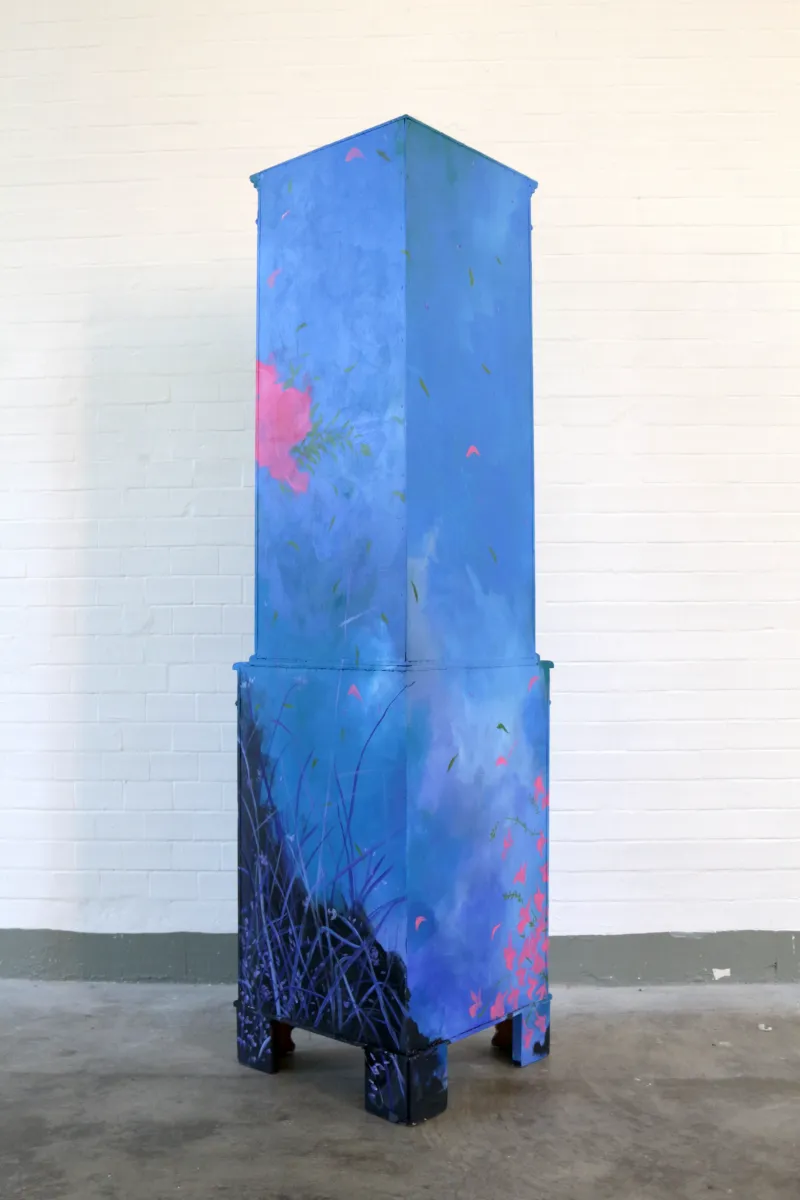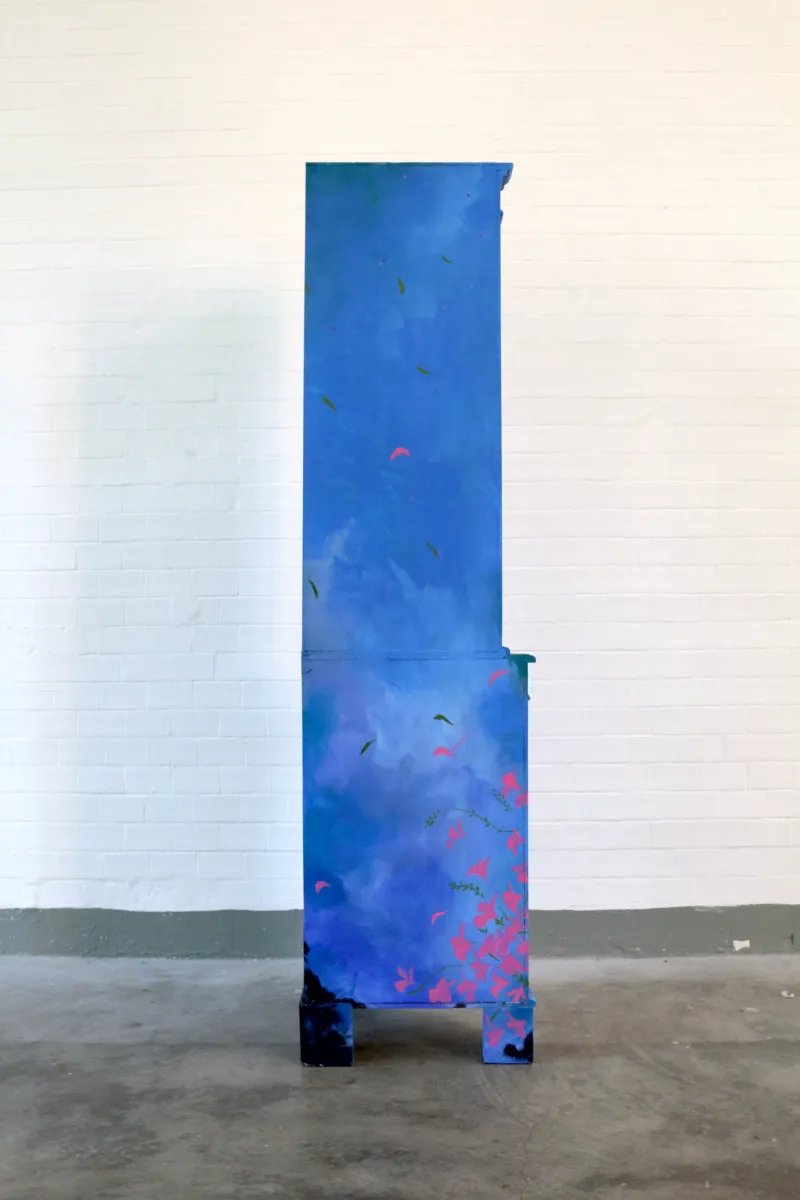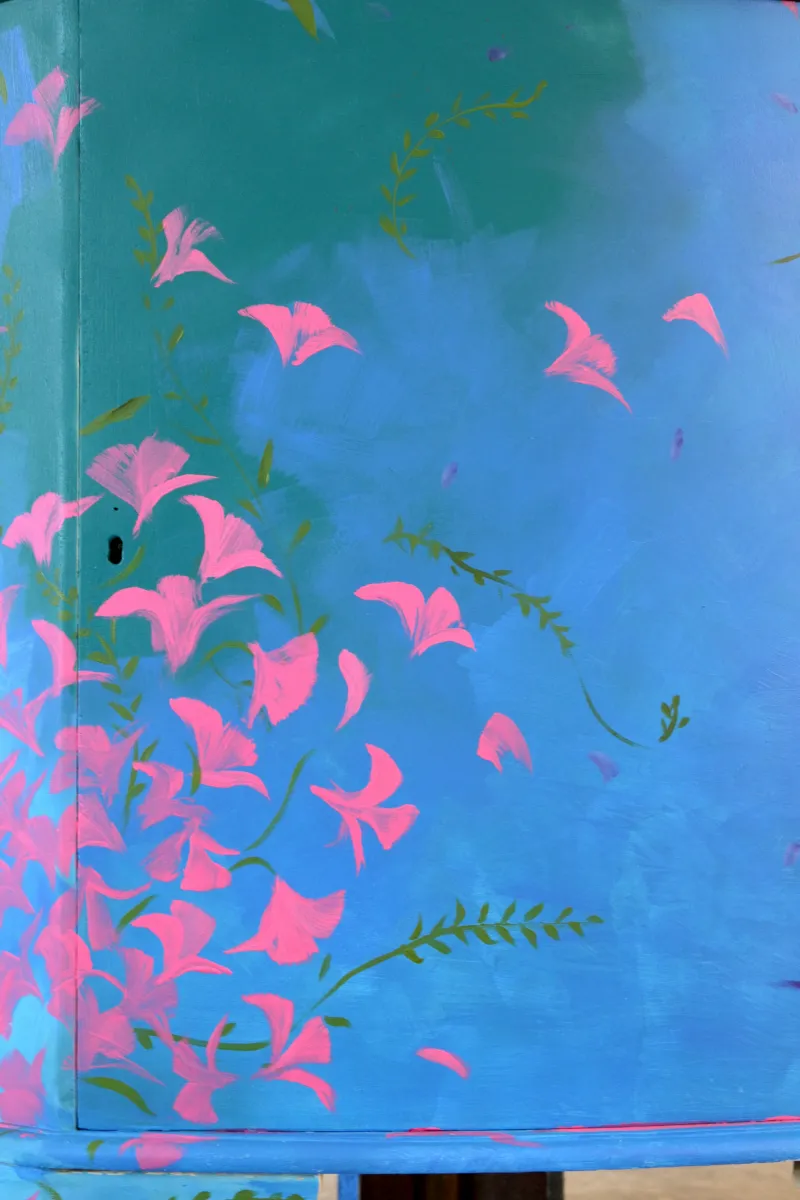Hochschulbibliothekarin (The Librarian)
EN: Romance novels marked for exploitative tropes and locked in a painted cabinet. After the secured Staff Reading cabinet in the library of my high school.
DE: Liebesromane, deren ausbeuterische Tropen gekennzeichnet und in einem bemalten Schrank eingeschlossen sind. Nach dem gesicherten Personalleseschrank in der Bibliothek meiner High School.
Critical readings of regency romance novels revealed the following themes, which are page marked and sorted by colour:
Heteronormativity - the assumption that heterosexuality is the only sexual orientation
Rape - sexual assault of a character
The ethnic other - eroticisation of racialised characters
Love-making - consensual erotic contact
In the realm of historical / 'regency' romance, all of these themes are necessarily warped; their intractability from the genre is symbolised in the novels' typical commissioned cover artwork.
This cabinet's 'cover-painting' excludes the tropes of an embracing couple (the woman suppliant, the man brutally impassive) and castles or great houses (implying that true romance is reserved for those wielding fealty, wealth; colonial power), focusing, instead, on the blossoming and dispersion of delicate flowers (priceless virtue; virginity).
Bereft of human figures and architecture, what remains is eroticised landscape.





